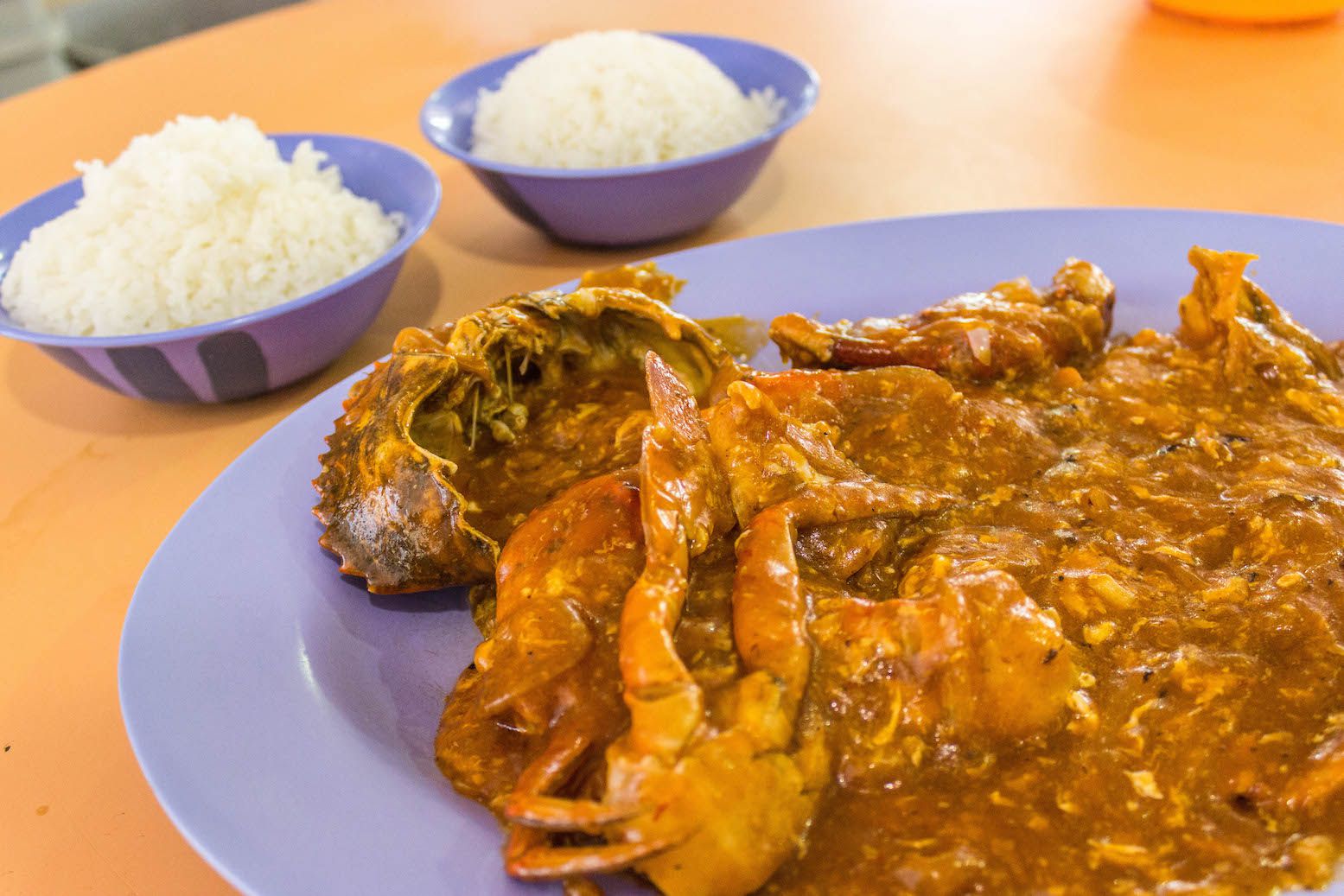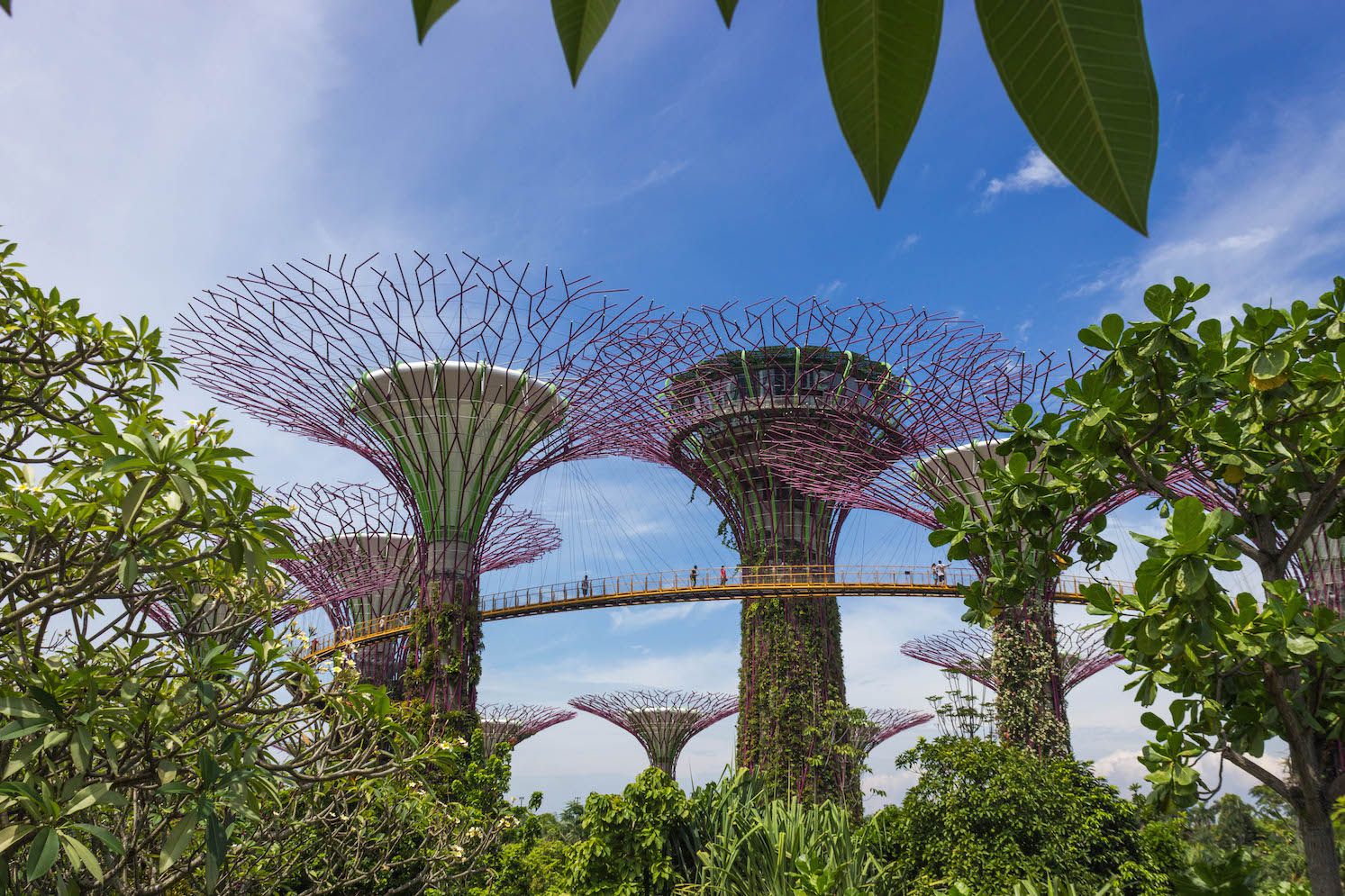Exchange rate: 1 USD to 1.38 Singapore Dollar (SGD)
Accommodation
Accommodation in Singapore is extremely expensive for Asian standards. For example, an 8-bed dormitory starts at around USD 20 per person per night, while a private room with bathroom in a low tier hotel starts at USD 50 a night.
As a solution to the high prices of accommodation, we decided to spend our nights in Johor Bahru in Malaysia, right across the border with Singapore, making day trips into Singapore. In Johor Bahru, we splurged a bit and stayed at the Belllo Hotel (yes, with 3 L’s) for USD 32.73 / night, which was one of the best hotels we’ve been to during this trip. The rooms were brand new, spotlessly clean and comfortable, with friendly staff and all working amenities. We couldn’t have asked for more.
By staying overnight in Malaysia, we saved quite a lot of money in accommodation. This is not necessarily a good option for everyone, as the commute and immigration/border crossing takes about an hour or so each way. But for us, it was the cheapest way to visit Singapore, making the commute worth it. Plus we’ve learned that it’s often too much hassle to hull everything we own to a brand new place for just one night. This way, we only took what we needed for the day into Singapore.
Money Saving Tips
- If you are in Malaysia and plan on going to Singapore, consider staying overnight in Johor Bahru and making day trips to Singapore. Accommodation in Malaysia is far more affordable and a way better value.
- Staying near JB Sentral in Johor Bahru is the closest and most convenient base for commuting into Singapore for day trips via public transporation, such as the bus or train.
- Avoid weekends, if possible. A lot of Singaporeans visit Johor Bahru on the weekends for cheap shopping and food, so hotel prices are noticeably higher Friday to Sunday.
Food & Drinks
Singapore is known for a great variety of quality food. We definitely did as much eating as we did sightseeing during the two days. Chilli crabs were a must-try, as well as other popular Singaporean dishes such as Hainanese chicken rice and kaya toast. Food in Singapore was definite pricier and we ended up spending an average of USD 17.20 per person per day, which is considerably more than what we usually spend in other countries throughout this trip.

Money Saving Tips
- Food is quite expensive in Singapore and your best bet to stay under budget is to eat at hawker centers with locals, which serve delicious food for a more affordable price. Chinatown is a great area with lots of options, but the more affordable hawker centers are outside the downtown area – we went to one at the Old Airport Road and got ourselves an amazing chili crab dish (which usually costs USD 60-80) for only USD 18!
- Mall food courts are also an alternative. Slightly higher in price if compared to hawker centers, they provide similar food in an air-conditioned environment, to escape the heat of Singapore.
Transportation
For our daily commute from Johor Bahru in Malaysia, the available options were: car/taxi, bus or train. We opted for the train option, which is a lot cheaper than a taxi ride, but a bit more expensive than a bus ride, with the added advantage of no traffic. Especially during peak rush hours, traffic on the causeway crossing Johore Strait can often be at a standstill. Train passengers also go through a different border crossing that has way less people.
The Shuttle Tebrau train only began this July 1, 2015, so it’s a brand new service. Trains leave daily, 6:30am to 11pm, with 7 set departure times. The actual train ride only took 5 min, but the process of going through immigration, exiting Malaysia and entering Singapore makes the whole process take up to an hour. Coming from the Singapore side, make sure to go to the Woodlands Train Checkpoint, not the regular one for buses. We found out the hard way when we were stalled at customs because of a mix-up – not fun to be stuck for an hour explaining to officers the confusion!
From the Woodlands Checkpoint in Singapore, we would take a bus to the Woodlands MRT station (10 min) and then the metro downtown (40 min). Within Singapore, we opted for the 2-day tourist pass (USD 11.56) which granted us unlimited transfers using the MRT and bus lines (except for some special bus lines that run late at night). It was a convenient and cheap way to explore Singapore and we never felt the need to take any other means of transportation in the country.
Money Saving Tips
- Shuttle Tebrau is a great alternative to buses commuting between Johor Bahru and Woodlands. Buy tickets on the Malaysian side in ringgits for a better deal as compared to the Singapore dollar. A one-way ticket costs MYR 5 (USD 1.30) or SGD 5 (USD 3.62).
- The tourist pass is an inexpensive way to get around in Singapore, granting you unlimited MRT and bus rides that can take you pretty much anywhere you want in the country.
Entertainment
Even though Singapore is filled with paid attractions, the main touristic ones (at least the ones we wanted to see) were free! Below is a list of the attractions we visited:
- Chinatown We came to Chinatown mainly for the food, but we checked the few attractions around, such as the Sri Mariamman Temple and the Buddha Tooth Relic Temple. Besides those, the Maxwell Food Center is a must-see (and try!).

- Singapore River Area Around the Singapore River lies a group of touristic attractions. We made sure to walk by Cavenagh bridge, the Fullerton Hotel, the Clarke Quay and the Merlion statue (the mascot of Singapore). Beside those, the views of the skyscraper and Marina Bay Sands across the river was a beautiful sight.
- Marina Bay Sands and the Gardens by the BayWe stopped by Marina Bay Sands and the Gardens by the Bay. We didn’t go in to see the exhibits at the Gardens by the Bay, which costs around USD 20 per person, as the outside view was already impressive enough.
Along the attractions mentioned above, we also checked multiple malls, such as the Ngee Ann City, VivoCity and the Shoppes at Marina Bay Sands to name a few.
Other popular paid attractions in Singapore include the Singapore Zoo, Night Safari, Singapore Flyer, Universal Studios Singapore, Underwater World Singapore, and the Singapore Aquarium.
Miscellaneous
We bought our standard souvenirs for our families (postcard and magnet) in Singapore that summed up to USD 1.81.
We’re pretty pleased about keeping the total cost of our 2 days in Singapore to under $100! It’s the biggest challenge our budgeting has faced, and we handled it with creativity. Despite the brief visit, we felt like the time we spent there was more than enough to get a good grasp of the essence of Singapore.

